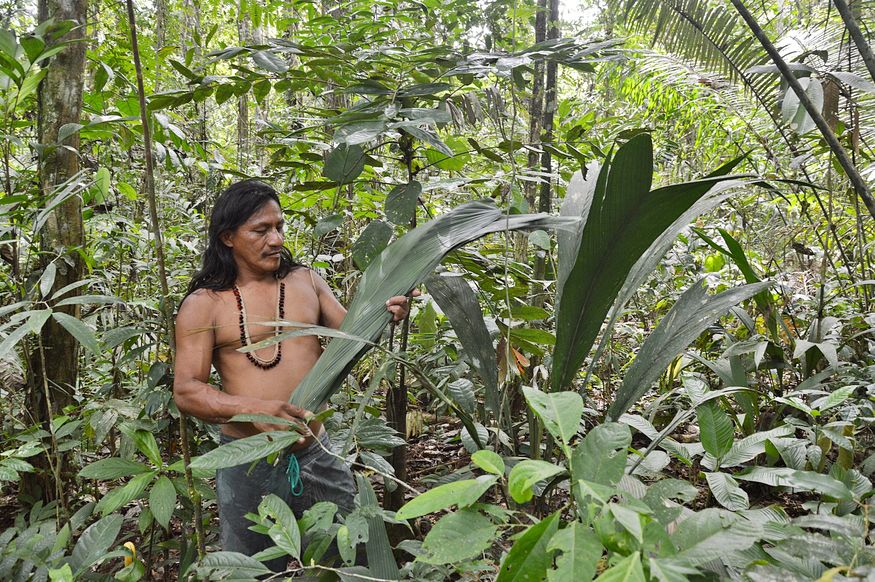The Amazonian food is all about “you eat what you catch.” The jungles of Peru, Ecuador, and Brazil are home to indigenous tribes who mainly rely on hunting and fishing. I spent several months traveling through the Amazon rainforest. In this article, I’ll tell you about the most interesting dishes I’ve tried there.
My journey to the Amazon jungle kicked off in the Peruvian city of Pucallpa. It’s a bustling port town situated along the Ucayali river. I arrived there with a mission: to find the Boiling River of the Amazon, a phenomenon I first learned about from a TED Talk years ago.
Содержание
Juane, Amazonian Tamale
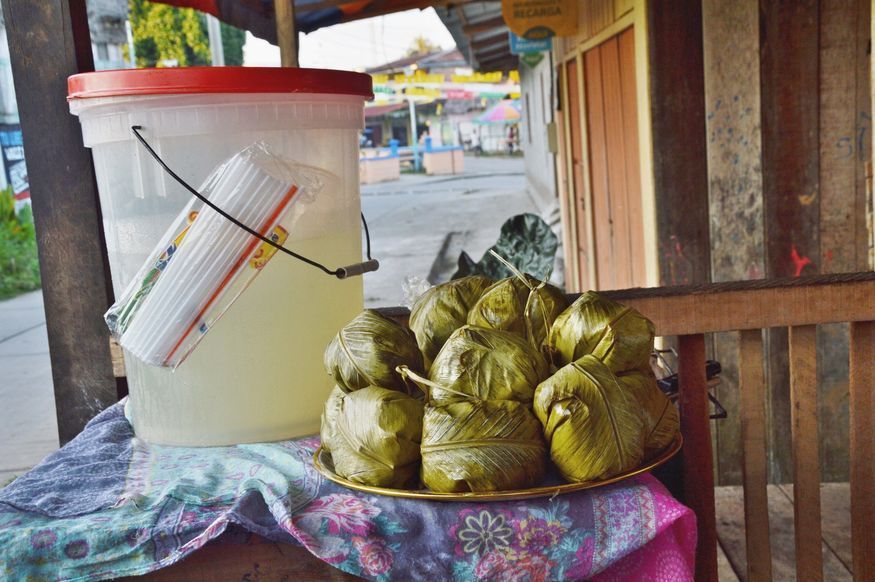
Pucallpa greeted me with street vendors selling something wrapped in banana leaves. The locals seemed to be enjoying it, so I decided to grab some for lunch before delving deep into the jungle.
Juane is an Amazonian food that originates from the city of Moyobamba but is beloved throughout the Peruvian Amazon. It’s akin to a large tamale, a corn cake wrapped in banana leaves, a favorite across Latin America. However, in the Amazon, rice takes the place of corn. Boiled rice is filled with chicken, egg, and an olive with a pit – watch out for your teeth! The entire mass is then wrapped in a banana leaf and baked over hot coals.
Exotic Fruits

One of the greatest joys of the Amazon is the wide array of exotic fruits available in its markets. Personally, I was surprised by camu camu – a fruit boasting the highest Vitamin C content in the world. While its taste as a fruit wasn’t remarkable, its juice was fantastic! With 60 times more Vitamin C than an orange, there’s no need for a pharmacy in the jungle.
Another rare find was aguaje, unseen anywhere else in South America. Resembling red pine cones, they contain a yellow flesh akin to mangoes. Aguaje comes from Moriche palm trees, abundant in the Amazon rainforest. Known for its ability to balance female hormones, the fruit’s flesh was somewhat bitter with a huge seed inside. Aguaje is typically consumed as a juice – rich, oily, and not so sweet.
Patarashca, Baked Fish
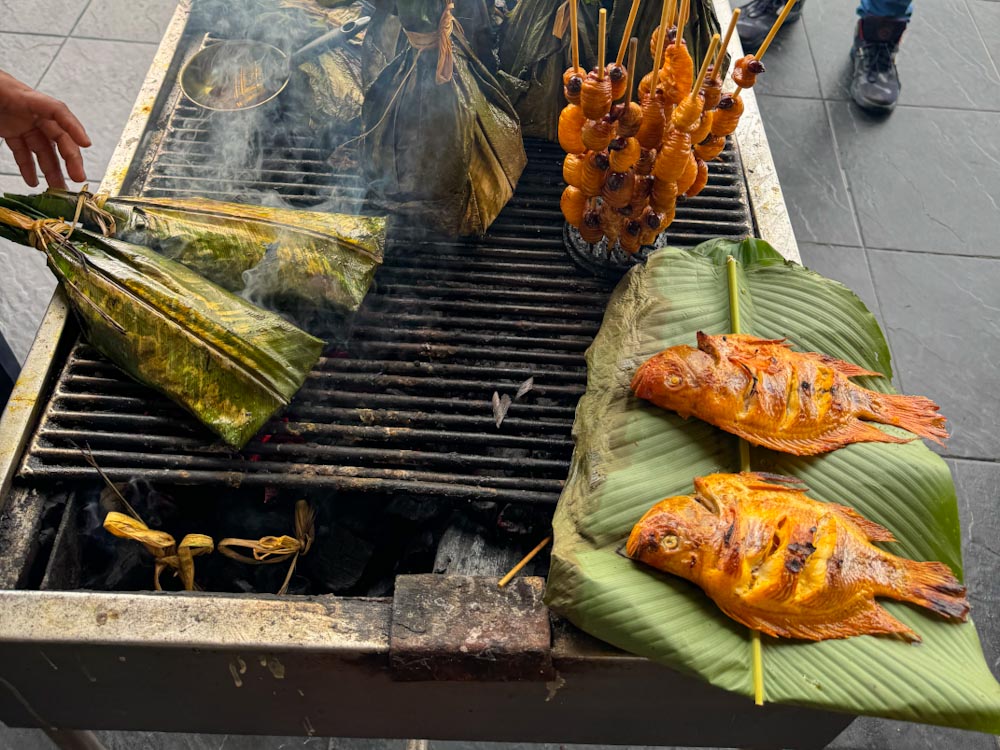
Patarashca is a dish where any river fish is wrapped in banana leaves and baked over coals. The seasoning is simple: salt, garlic, onion, and pepper. It’s the most popular dish in the Amazon, and it’s my favorite – always fresh, rich in taste, and not as extreme as some other dishes I’ll describe later in this article. The Amazon boasts over three thousand fish species, including piranhas, catfish weighing up to 50 kg, and pacu – a fish with teeth resembling human ones 😨.
While the food in Pucallpa was relatively “normal” – if you can even call a fish with human-like teeth normal – the deeper I ventured into the Amazonian selva, the stranger things became.
For those into bizarre foods, I highly recommend Anthony Bourdain’s “No Reservations” show and book. I absolutely love it and often follow his steps in search of weird food.
After spending a few incredible days with a local shaman on the Boiling River, participating in an ayahuasca ceremony, I continued my journey north. I hopped aboard a cargo ship going to Iquitos. But since the river was low, those ships didn’t take passengers officially. So I had to jump onto a moving one like in pirate movies! They allowed me to set up my tent on the deck, and I practically had it all to myself. For three or four days, I marveled at pink dolphins leaping from the brown river and battled flying cockroaches at night. However, the gastronomical experience of this trip was rather dull. We had plenty of rice and occasionally a bit of fish or chicken.
However, Iquitos redeemed my experience completely.
Caiman Steak
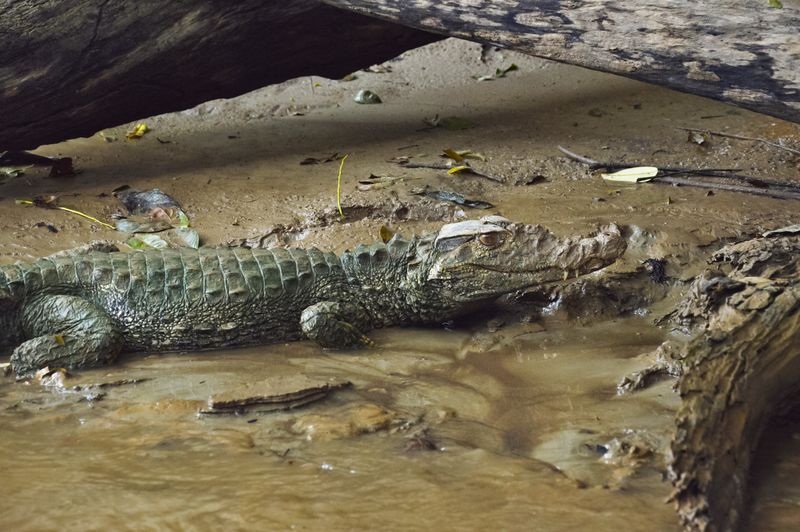
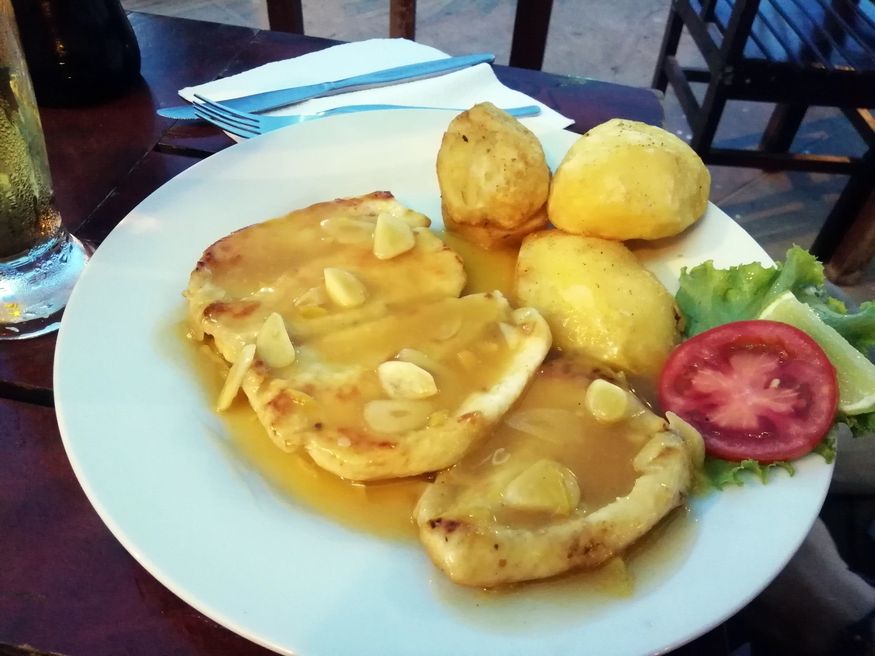
You’ve probably heard of the famous Belen market in Iquitos, where you can find absolutely any kind of bizarre foods. So, let’s start with the most delicious one.
Caimans are plentiful in the waters of the Amazon. They are a favorite catch of the local indigenous people. It’s not easy to catch a black caiman, one of the most dangerous predators in the Amazon. Therefore, locals often opt for the spectacled caiman. You can prepare caiman in various ways: grill it, make a ceviche or braise tail medallions in sauce. It tastes like boneless meaty fish with a hint of frog legs.
I’ve tried caiman twice. Once at a restaurant in Iquitos, where it was served as juicy medallions, and another time in the Ecuadorian jungle with the Huaorani tribe. They prepared a freshly caught caiman on a grill, without any condiments, but it tasted like heaven. There’s nothing too exotic about caiman meat, and even in Florida, alligator bites are a very common beer snack.
Giant Snail
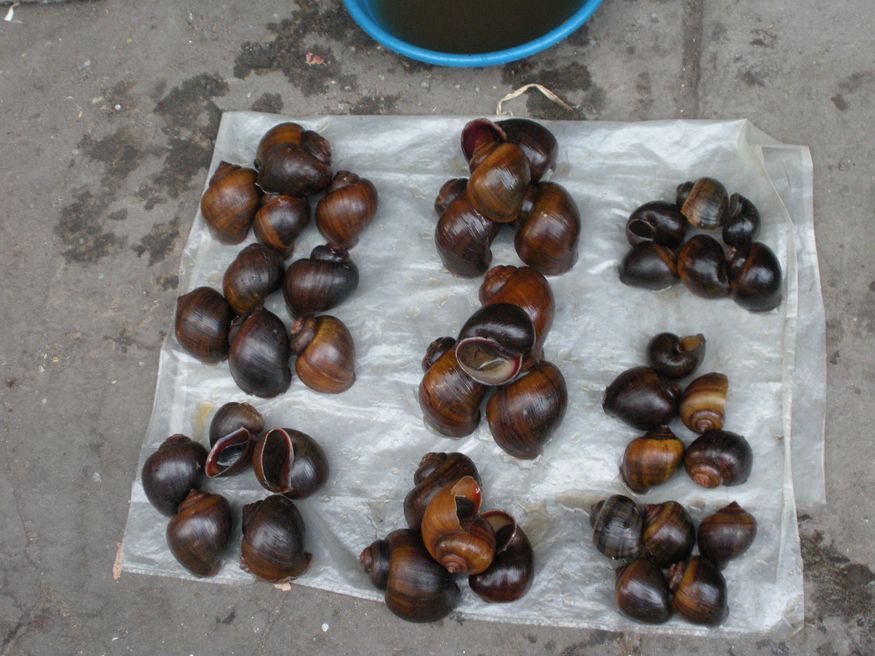
In the wet regions of the Peruvian Amazon, you can find river snails the size of a fist. These mollusks are a source of iron and protein, and are considered a delicacy. They’re usually boiled and stuffed with chili peppers, onions, and tomatoes.
Zarapatera, Turtle Soup
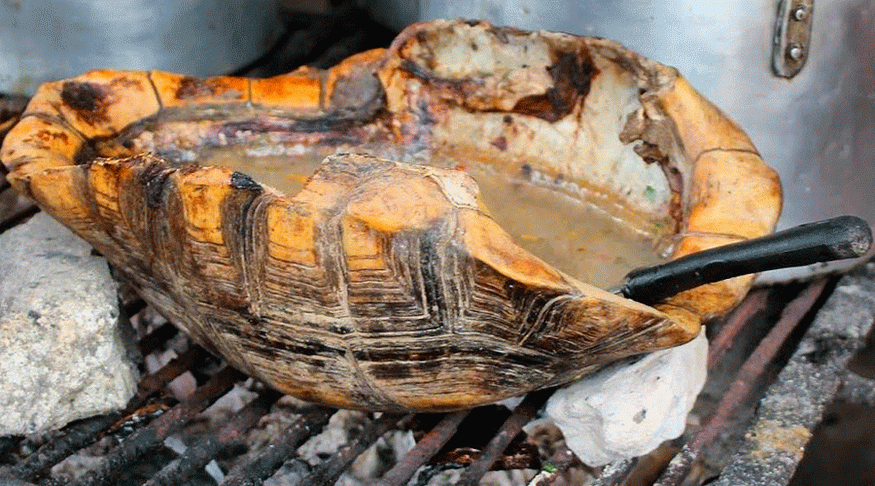
I’ll mention this soup, but I didn’t try it in Iquitos. Later on this trip, I had a chance to try turtle meat as I lived with the Indian tribe and ate everything they did. However, zarapatera is a different story.
In the humid areas of the Peruvian Amazon, you’ll find the motelo turtle. Its meat is fried, grilled, stewed, or made into soup. Attention: this turtle species is considered vulnerable. Green zarapatera soup is served directly in the turtle shell. The traditional recipe is not kind: extracting the animal from the shell is very painful, and the turtle often dies right in the soup. But in some Amazon departments, this dish is considered traditional.
Turtle Eggs, Black Market Delicacy
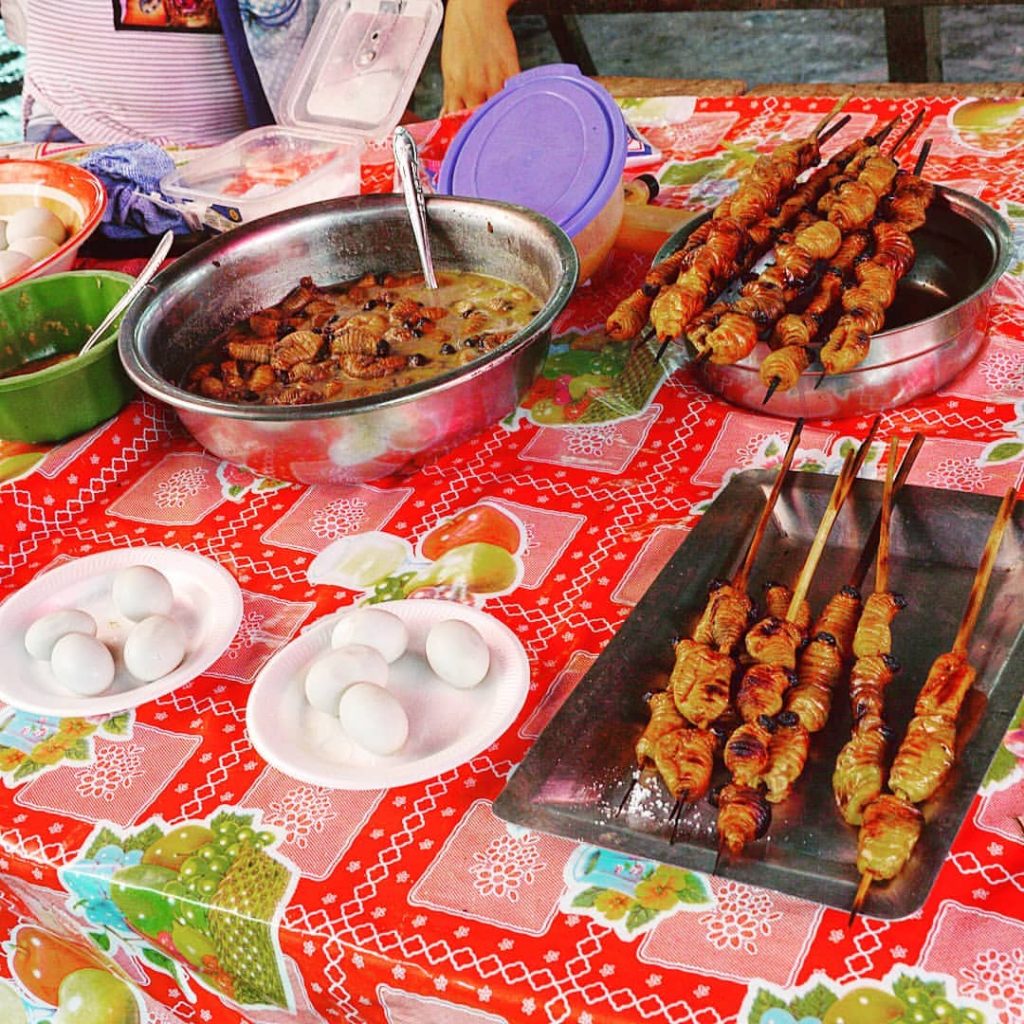
Another dish I didn’t purchase at the Belen market, but took a bite of when my local friend was eating it. It’s honestly one of the worst dishes I’ve ever tried in my life.
The eggs of the yellow-spotted river turtle are a major food source for Amazonian indigenous people and an important protein source. Some people believe that consuming these eggs acts as an aphrodisiac or contributes to a longer life. Sadly, poaching has endangered the turtles. However, at the Belen market in Iquitos, you can find women selling boiled taricaya eggs. Inside the eggs, there’s a huge yolk. It is dry, tasting like sand, and it even crunches between your teeth. It has a disgusting river smell.
After Iquitos, I continued my journey along the Napo River to Ecuador. It’s a less-traveled route, involving 4 or 5 boat changes. It eventually reaches the port of Coca, which is home to the indigenous Huaorani tribe. It was the culmination of my Amazonian culinary adventure!
Majas, Forest Rodent
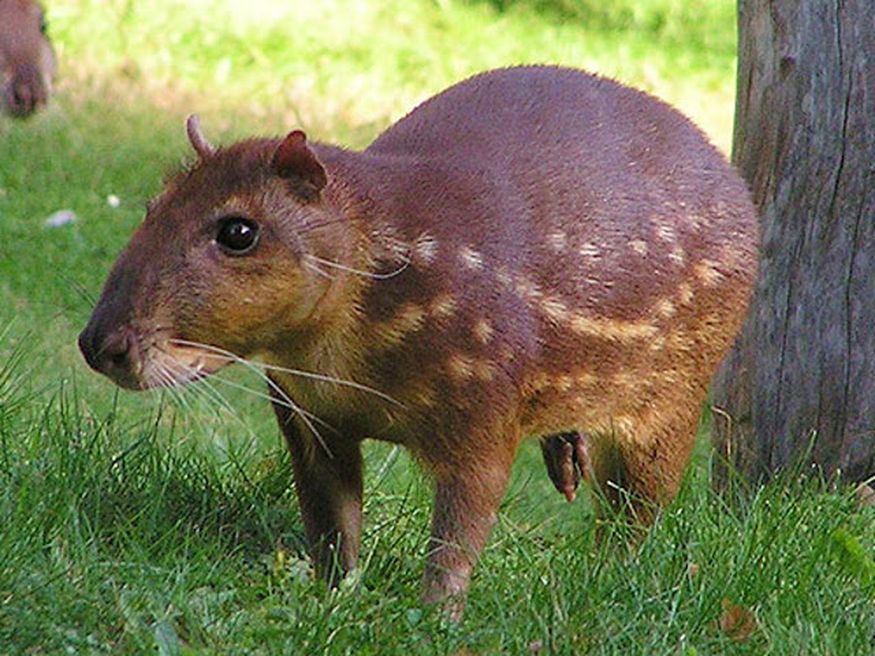

The Amazonian food along the Napo River was delicious, mostly consisting of fish and rice. However, once I was offered something called majas, and I decided to give it a try.
The meat tasted like guinea pig, which is common in Ecuador. Later, when I connected to the internet, I learned that majas are large rodents slightly bigger than rabbits, widespread in the Amazon. Their meat is very nutritious, similar to beef. They are easy to tame and breed in captivity, so majas are beloved and consumed as often as chicken in the Amazon. The meat is typically served fried or stewed with vegetables.
The other four dishes on this list belong to the Huaorani tribe, who reside in the Yasuni National Park. They remained uncontacted until the 1970s when oil was discovered in the region, prompting missionaries to attempt to civilize the “wild Indians” who fearlessly protected their territory. Bameno village is a three-day journey by boat (yeah, I pretty much lived on the boat since I left Peru) from the city of Coca.
Suri, Live Beetle Larvae

Suri is the most extreme dish I’ve tried in the Amazon. These are fat larvae, about the size of a thumb. These bugs reproduce quickly and abundantly, and finding them in the aguaje palm trunk is quite easy. The larvae are rich in minerals like magnesium, iron, and zinc, as well as vitamins and lysine, an amino acid essential for humans. They’re eaten alive or grilled, and trust me, the first option is tastier!
But it’s quite challenging to take the first – crunchy! – bite of a moving creature. I almost cried while doing it, but I didn’t want to appear weak in the eyes of the Huaorani.
Would you dare to try this Amazonian food?
Arapaima, The Largest Freshwater Fish in the World
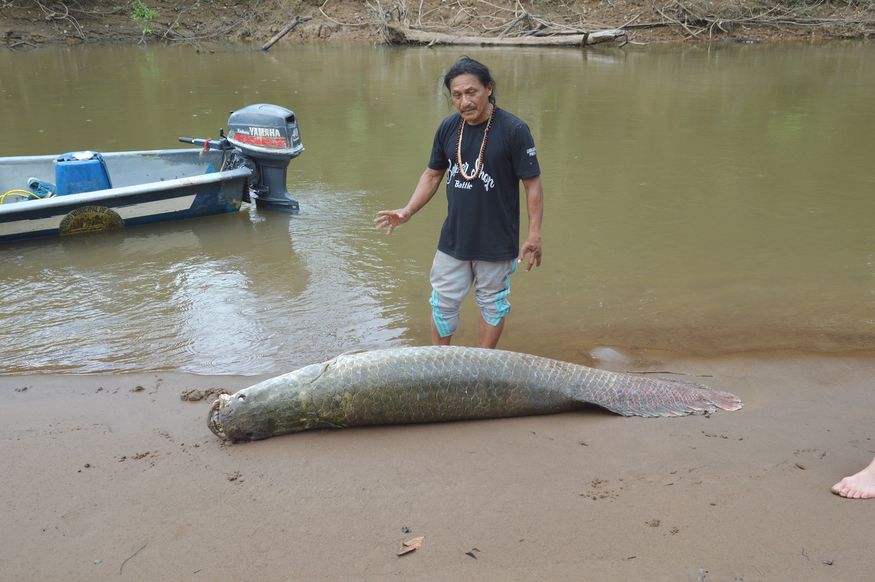
Another crazy fish in my list!
Paiche, also known as Arapaima, is one of the largest freshwater fish, growing up to 2 meters long! It hasn’t evolved much since the Miocene era, which means this fish species has been around for about 5 million years. It feeds on small fish and hunts animals that come near the river. Its powerful tail is protected by tough, sharp scales. It is capable of breaking the spine of a large animal with one strike!
Paiche needs to surface since it breathes with lungs. That’s when fishermen spear them. It’s a hearty, meaty fish, almost boneless, similar in taste to tuna. Its meat is highly valued worldwide.
Fried Monkey, Shocking Amazonian Food
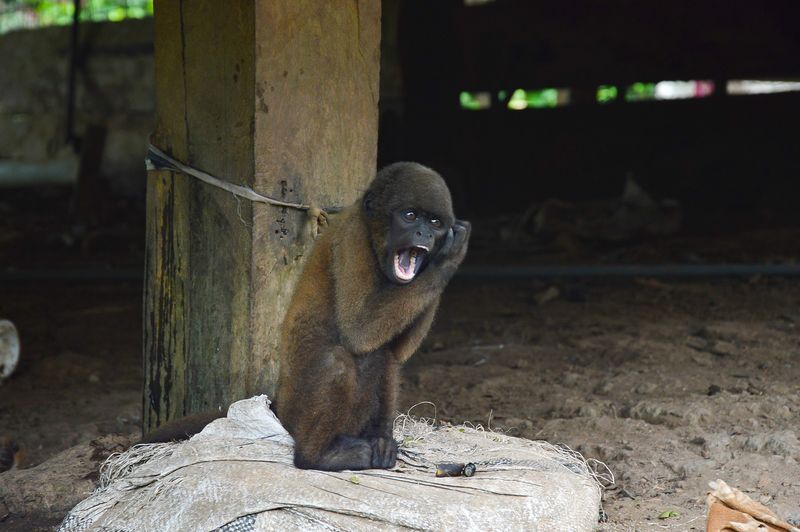
Monkey meat is a traditional dish in some areas of the Amazon. It’s mainly eaten by indigenous people in villages, as selling monkey meat is prohibited in cities. Tribes simply live by the rule: catch it, eat it. The recipe is straightforward: throw the animal on hot coals and wait for about an hour until the meat is roasted. Other tribes prepare monkeys on a spit for a day or two, so the meat isn’t as tough.
Most tribes hunt spider monkeys as they are larger. The Huaorani tribe uses a traditional blowgun for hunting. I joined them on a monkey hunting expedition, and you can read the full story in this blog.
Chicha, Saliva Beer
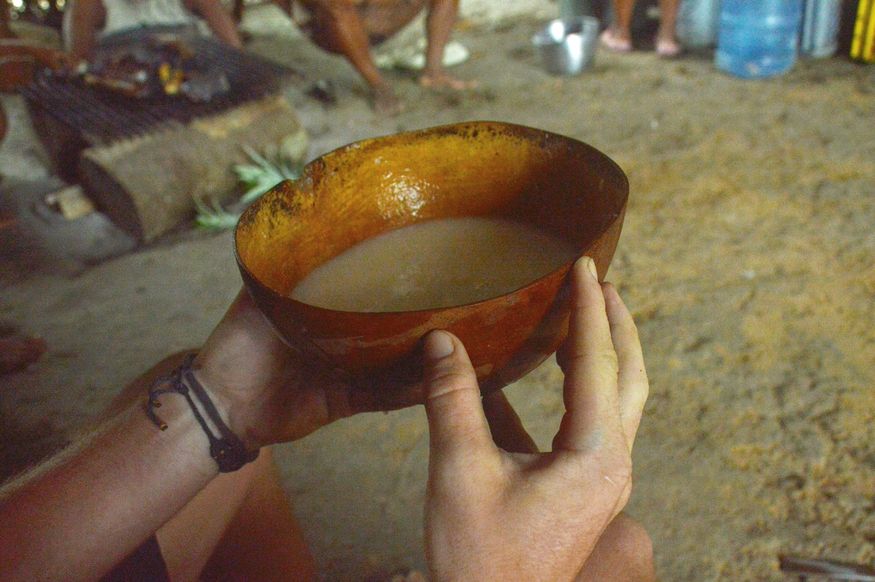
This mildly alcoholic beverage is made by women from the Huaorani and Kichwa tribes. They boil and chew cassava roots into a paste, then spit it into a bucket. Yes, you heard it right. The mixture is left to ferment overnight, and the longer it ferments, the higher the alcohol content.
It’s the most popular drink/meal in the jungle, consumed by hunters.
